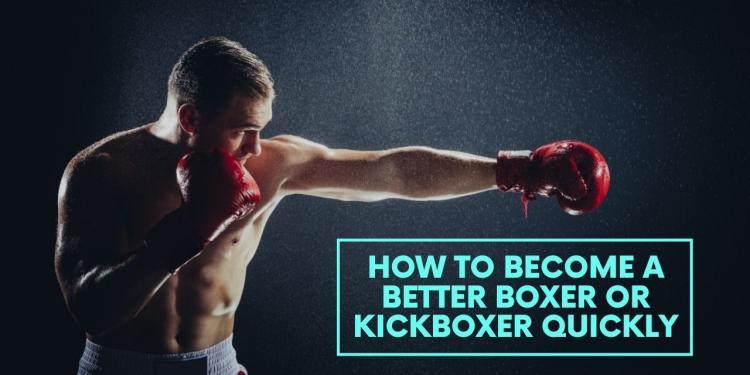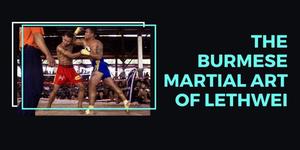So you wanna improve your striking (kickboxing or boxing) and you want to do it quickly? Then follow these tips. These tips apply to both boxing and kickboxing as they are both similar in how to approach training. Because improving your striking is not about working on a specific punch or movement---it is about how you train to reap the most benefit and get past your plateau.
1. Mentally Rehearsing Your Boxing or Kickboxing
Mentally rehearsing is something done by all elite athletes. Research has shown that mental rehearsing along with physical practice is much better for learning skills than just physical practice alone.
So how does mental practice work in improving your boxing skills? The benefits are two-fold.
1. Research seems to suggest that visualizing movements activates the same motor pathways as physically practicing the specific skill. Imaging studies have shown this pathway activation, which is comparable to physical practice but at a lower level.
2. Cognitive science suggest that imagery speeds up the learning of the mental elements of the skill, such as applying proper force to the punch or creating the proper angle.

In order to mentally rehearse quickly, imagine yourself doing a specific movement. For instance, imagine yourself slipping outside and then throwing an uppercut. In mentally visualizing this, be as detailed as possible. Visualize all the important details of the movement; how far you slip, how straight your back is, how you turn on the ball of your foot on the uppercut, and how spread out your feet are, etc. For mental imagery to work, you need to be detailed and specific.
2. Shadow box whereever and whenever you can
Shadow boxing isn't meant to be done just in the gym or when warming up. Shadow boxing literally takes no equipment at all but is so useful for your boxing. Shadow boxing is done by world champions so if they do it, you should also do it.
Footwork is fundamental in both kickboxing and boxing; so when you have space and time, incorporate as much footwork in your shadow boxing as possible. Shadow boxing is an extremely good time to work on footwork because you are unencumbered by barriers and opponents. This is part of the reason why beginners should concentrate more on shadow boxing than hitting the bags or sparring---because getting used to the movement involved in boxing is better done when shadow boxing where there are no physical barriers.
If you are able to shadow box in the mirror, do so. It is extremely beneficial to see your technique live and correct it on the spot. A former boxer that trained at our gym used to say that boxing is the most vain sport of all because you spend so much time looking at the mirror when you're training. It's true---elite strikers love to look in the mirror when they shadow box.
3. Record yourself sparring and drilling
For the first few years of my martial arts training, I refused to record myself because I didn't want to be seen as vain. But man, I should have been doing that the whole time. The way you think you look versus the way you actually look when you box is day and night sometimes.
But vanity aside, watching myself gave me an opportunity to analyze my technique, and I was able to see areas I needed to improve on. This was was especially true when it came to sparring.
Fighters watch tape of their opponents and of themselves all the time to improve and prepare for their fights. You should make recording your sparring sessions and drills a habit as it can allow you to see holes in your game.
4. Bagwork with purpose
When hitting the bags, do not just do it monotonously. That really doesn't get you anywhere. Instead, pretend that the bag is an opponent and work on moving and throwing combos while hitting the bag.
Working the bag like it is an opponent will work your cardio, footwork, and defense in addition to punching technique.
5. Get in the habit of compound movements and combos
Combat sports is built on combos, not single punches or movements. So you need to practice that way. When you are first starting, it is okay to practice single movements just to get it down. But once you have single movements down, your goal is to practice compound movements.
If you're doing padwork, make it a 4-5 strike combo. Work in a slip, parry, or check in your combo. Create angles in your combos. Move.
Work on not pausing with your combos, make it one fluid movement.
6. Do various types of sparring
We previously touched on the types of sparring you should do and how often you should do it. In order to improve, you can't just go all out in every single sparring session.
To improve, you need to mix up your hard sparring sessions with 1) light sparring sessions and 2) technical sparring sessions
Light sparring sessions allow you to be creative without worrying about getting hurt. Hard sparring activates our fight-or-flight response and so it shuts down our creativity. If you watch muay thai sparring, you will see them do a lot of light sparring---and you will see a lot of creative movement in their light sparring sessions.
Technical sparring allows you to work on certain movements or techniques under live situations. Technical sparring is a type of practice that sports psychologists refer to as "deliberate practice." It is the purposeful and systematic approach to practicing. It requires focused attention and a specific goal. So how does it apply to your boxing or kickboxing? Technical sparring allows you to practice certain movements that you do not have down, under specific constraints. It allows you to practice certain movements in a semi-realistic setting.
The video below shows a round of technical sparring in which Rigondeaux specifically works on his jab---throwing it 90% of the time for that one round. Technical sparring can be done at various speeds and intensity---but the goal is to work on a specific movement.




